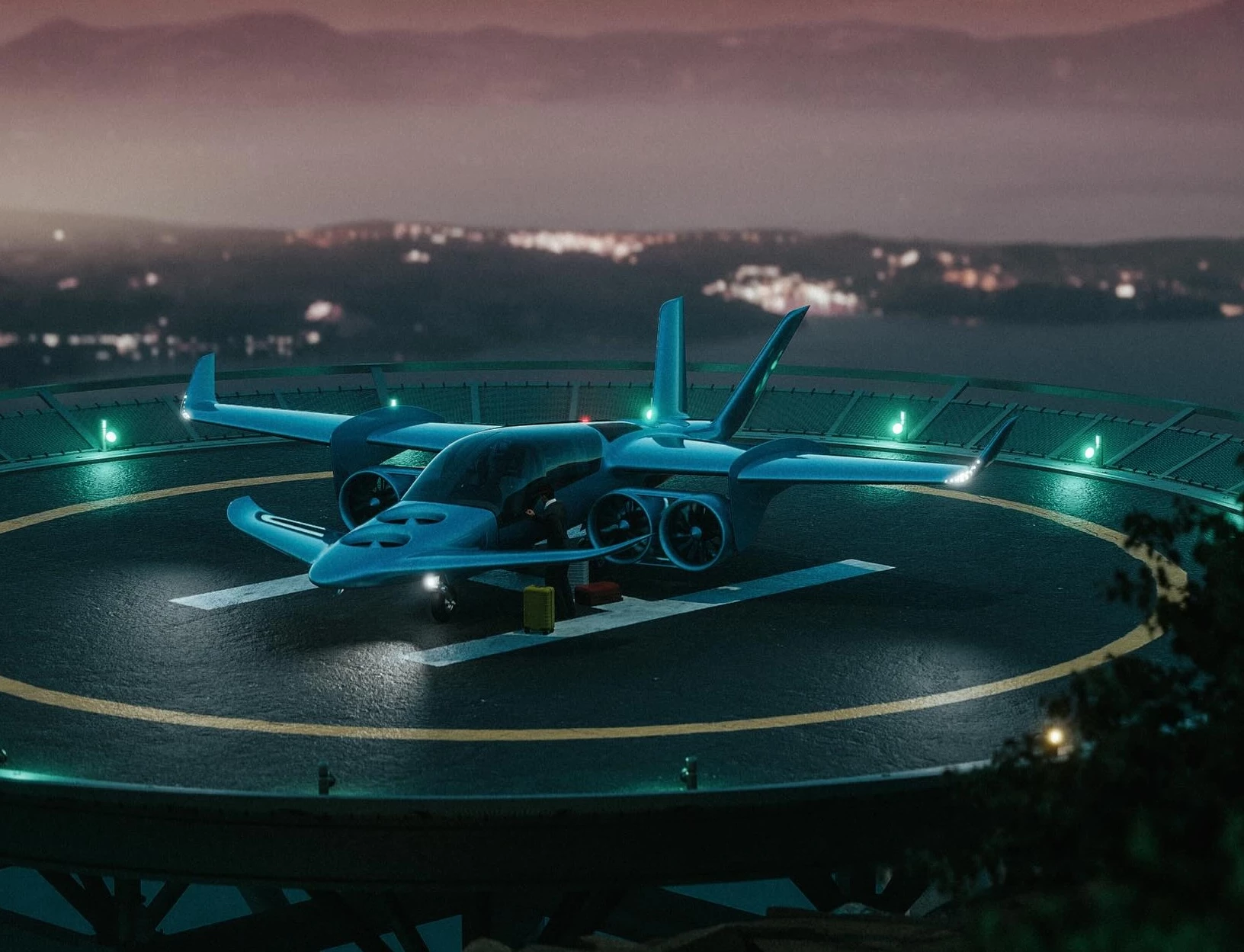Another day, another wild electrified aircraft concept that reimagines the future of air travel in a way that fascinates and enthralls. This time around, it isn't a straight eVTOL serving as protagonist, but a hybrid that tilts its ducted electric fans to offer helicopter versatility with airplane range and efficiency. Technically identified as a hybrid-electric vertical and short takeoff and landing (HeV/STOL) vessel, the newly modeled ANN Plus uses a turbine-electric powertrain to more economically bridge the gap between traditional air and ground transportation options.
We've come to expect crazy, new electrified aircrafts to come from China by default, but Manta Aircraft is actually an Italian company, based in the northern region of Lombardy. That doesn't mean it's without connection to China, however, as it recently partnered up with Shenyang Aviation Industries Group with an eye toward accelerating development of its multi-craft ANN platform as a regional air mobility solution for the Chinese and South Asian markets.
It's not surprising, then, that Manta debuted the latest member of the ANN series at the 2024 China Airshow last month, following up on the compact ANN1 and ANN2 with a full-scale model of its largest variant yet, the ANN Plus. The new ANN Plus, also called the ANN-6, is a multipurpose six-seat craft aimed at personal mobility, business travel, medical response, and cargo transport. It's designed to accommodate a single pilot and five passengers.

While it may push the limits of abbreviation convention and usefulness, Manta's HeV/STOL configuration looks to find the best blend of advantages of several different categories of cutting-edge aircraft. As an eVTOL, it takes off from anywhere, without the need for a runway, using four wing-mounted tilting ducted fans combined with four fixed ducted fans integrated into the fuselage. During flight, the wing fans tilt into forward-propulsive position and provide full thrust vectoring.
Manta's hybrid propulsion system relies on a battery pack for primary power and runs as a pure-electric on short journeys, providing a 186-mile (300-km) zero-emissions range in the ANN Plus. This capability allows it to operate quietly, without emissions, through dense urban centers, sensitive wilderness areas and other environments. So, for instance, when you simply need to get to an appointment across the city quickly, it'll provide a clean, quiet lift over traffic, operating like a traditional eVTOL. Manta says it will be cheaper to own and operate than a helicopter.

For mid- and long-range intercity and regional trips, the ANN still operates via the electric ducted fans but taps into a multi-fuel turbine-generator to charge the batteries. Manta estimates a total flight range up to 620 miles (1,000 km) for the ANN Plus and offers other range options for smaller vessels and different use cases. The ANN Plus has an estimated 130-knot (240-km/h or 150-mph) cruising speed and 178-knot (330-km/h or 205-mph) dash speed.
That extra speed and range extend the ANN Plus' utility past that of an all-electric aircraft, and the short takeoff/landing capability helps to further its operational versatility. It can perform both short takeoff/vertical landing and short takeoff/short landing operations and has four times the endurance in STOL mode as in VTOL mode for a total of four hours.

In terms of running the turbine-generator, biofuels like sustainable aviation fuel (SAF) and Bio-Jet A1 are the plan for now, but Manta is developing the ANN platform with an eye toward future updates. So when battery technology improves to the point of offering that 620-mile range on its own, or the hydrogen economy matures enough to use a hydrogen engine or range-extending fuel cell stack, Manta will be able to swap in those solutions.
Burrowing down more into the details of the ANN's potential use cases, Manta explains that its operational flexibility will allow it to be used for hopping between cities without airports; serving as a cheaper alternative to helicopters for emergency services; delivering offshore logistics support; and providing fast, efficient access into hard-to-reach remote areas. Since it's designed for smooth transitioning between VTOL and STOL operation, it can successfully bridge the gap between a helicopter and longer-range airplane during the same mission.
At just over 40 feet (12.2 m), the full-scale ANN Plus mockup measures roughly 10.5 feet (3.2 m) longer than the two-seat ANN 2 and has a near-double 39.7-foot (12.1-m) wingspan to match. The carbon fiber fuselage accommodates the wider side-by-side seating arrangement, and the craft stands just over 9 feet (2.7 m) tall.

The Plus design is otherwise quite similar to the ANN 2, with differentially moving canards up front, a pair of fuselage-embedded ducted fans in front of the cockpit and a second pair behind it, and a split-V tail fin.
Visitors at the China Airshow weren't left to gawk at the ANN Plus while clinging to velvet rope; they actually got to step inside and experience the luxurious cabin. The interior includes two seats up front and four seats laid out in vis-a-vis arrangement in the rear. Premium materials like Nappa leather, Alcantara and carbon fiber adorn the surfaces and furnishings. The pilot relies on a redundant fly-by-wire system with hands-on throttle-and-stick (HOTAS) and a widescreen HMI.

Manta has previously done extensive computational fluid dynamics (CFD) analysis and wind tunnel testing on the ANN design, and plans to work with Shenyang Aviation Industries on the production technology for two full-scale prototypes and certification with the Civil Aviation Administration of China (CAAC), ahead of launch and industrialization.
Source: Manta Aircraft

















